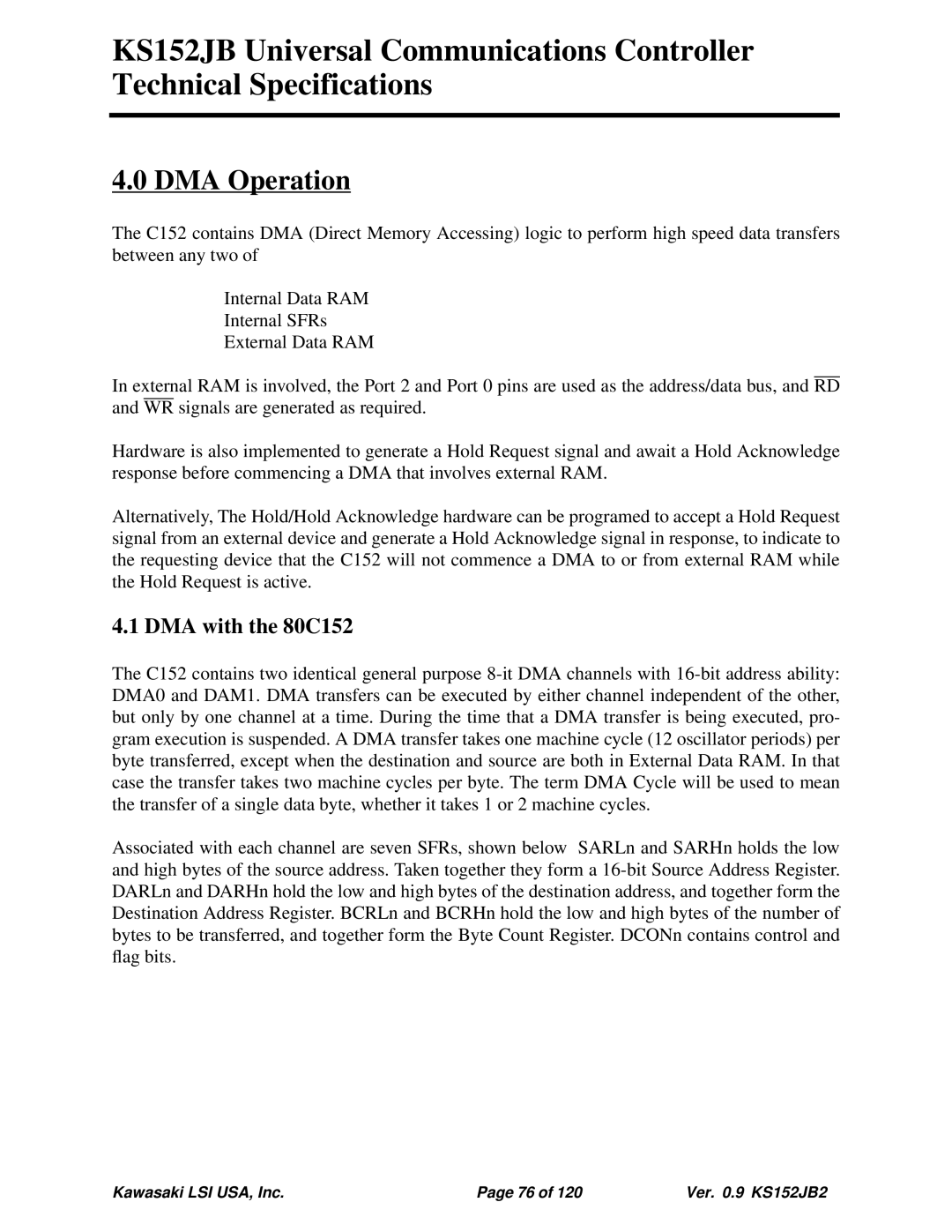
KS152JB Universal Communications Controller Technical Specifications
4.0 DMA Operation
The C152 contains DMA (Direct Memory Accessing) logic to perform high speed data transfers between any two of
Internal Data RAM
Internal SFRs
External Data RAM
In external RAM is involved, the Port 2 and Port 0 pins are used as the address/data bus, and RD and WR signals are generated as required.
Hardware is also implemented to generate a Hold Request signal and await a Hold Acknowledge response before commencing a DMA that involves external RAM.
Alternatively, The Hold/Hold Acknowledge hardware can be programed to accept a Hold Request signal from an external device and generate a Hold Acknowledge signal in response, to indicate to the requesting device that the C152 will not commence a DMA to or from external RAM while the Hold Request is active.
4.1 DMA with the 80C152
The C152 contains two identical general purpose
Associated with each channel are seven SFRs, shown below SARLn and SARHn holds the low and high bytes of the source address. Taken together they form a
Kawasaki LSI USA, Inc. | Page 76 of 120 | Ver. 0.9 KS152JB2 |
